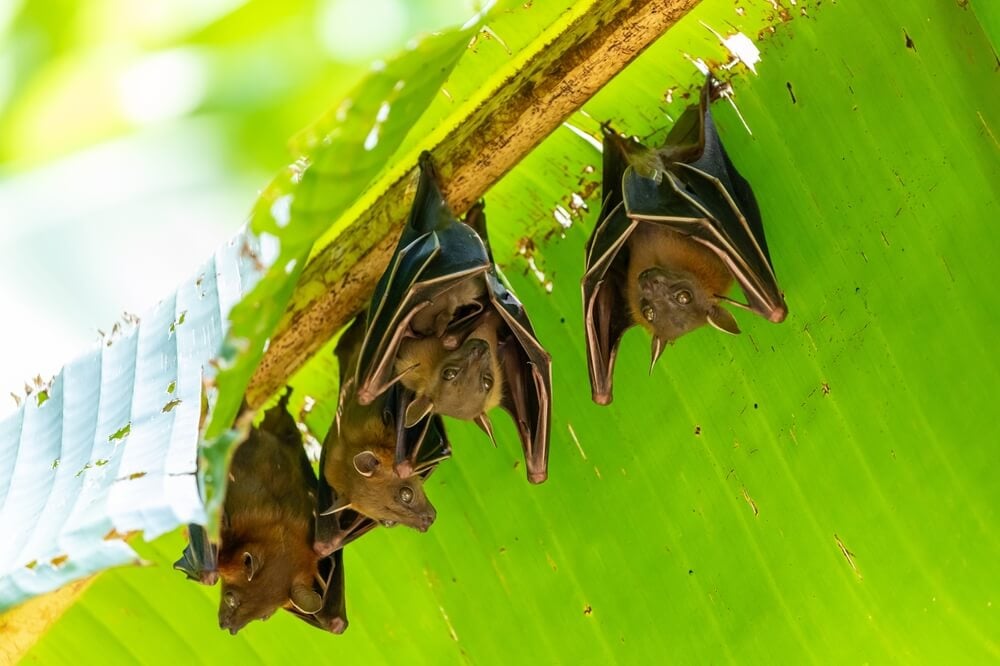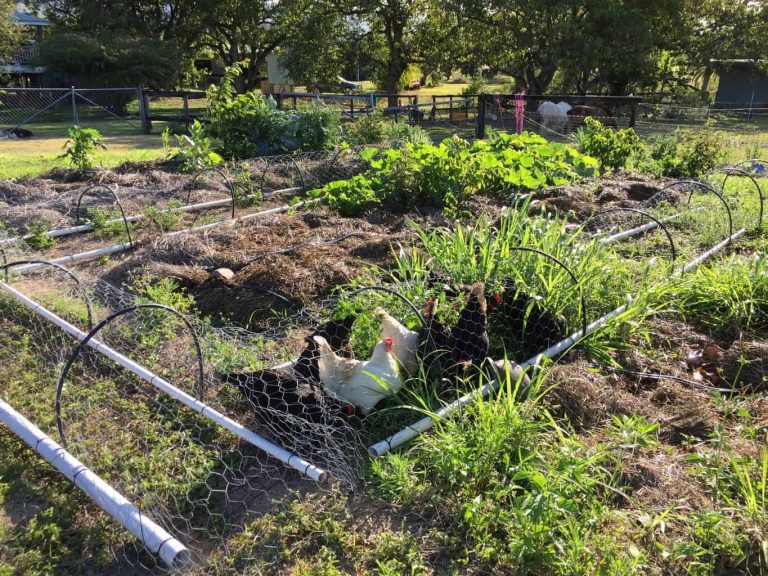How To Attract Bats To Your Garden – 13 Epic Flowers And Shrubs That Bats Love!
Welcome! This article contains affiliate links, meaning I get a commission if you decide to make a purchase through my links, at no extra cost to you.
Want to transform your garden into a thriving nocturnal ecosystem? Then it’s time to roll out the red carpet for bats! These incredible flying mammals are nature’s ultimate pest control squad. They hungrily devour thousands of mosquitoes, beetles, and moths each night. Attracting bats is also easy. Plant a buffet of night-blooming beauties and insect magnets that turn your yard into an all-night diner.
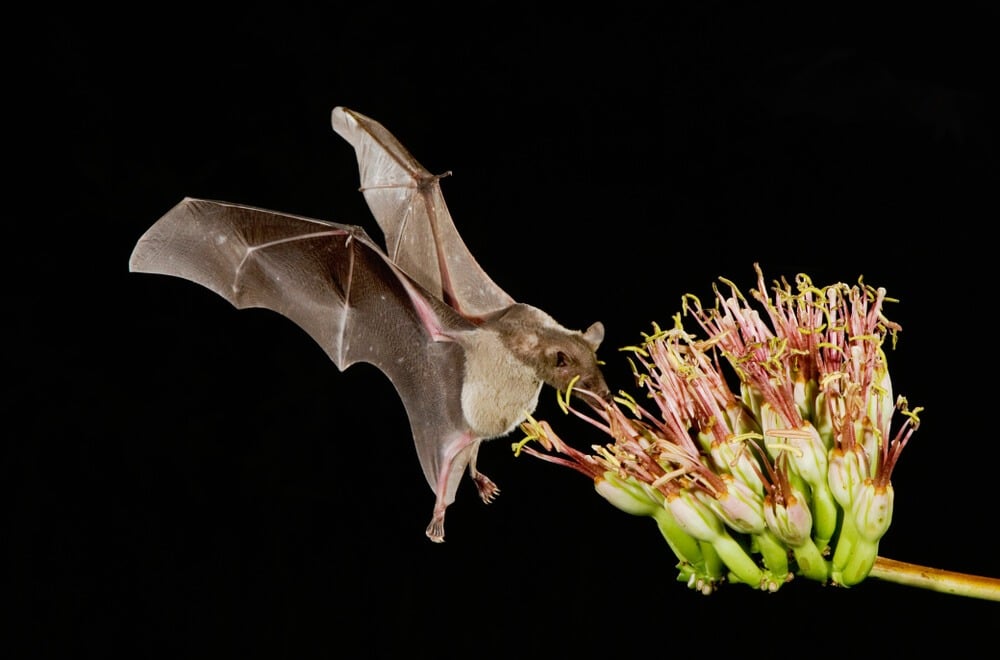
Sound intriguing?
Then let’s summon some backyard bats! Here’s how.
13 Epic Flowers That Attract Bats
Here’s your guide to creating a bat paradise, one bloom at a time. Welcome to the dark side of gardening, where the real magic happens after sunset!
Part I. The Nocturnal Nectar & Seed Producers
These night-blooming beauties open at dusk to feed nectar-loving bats and attract the moths that insectivorous bats hunt.
1. Moonflower (Ipomoea alba)
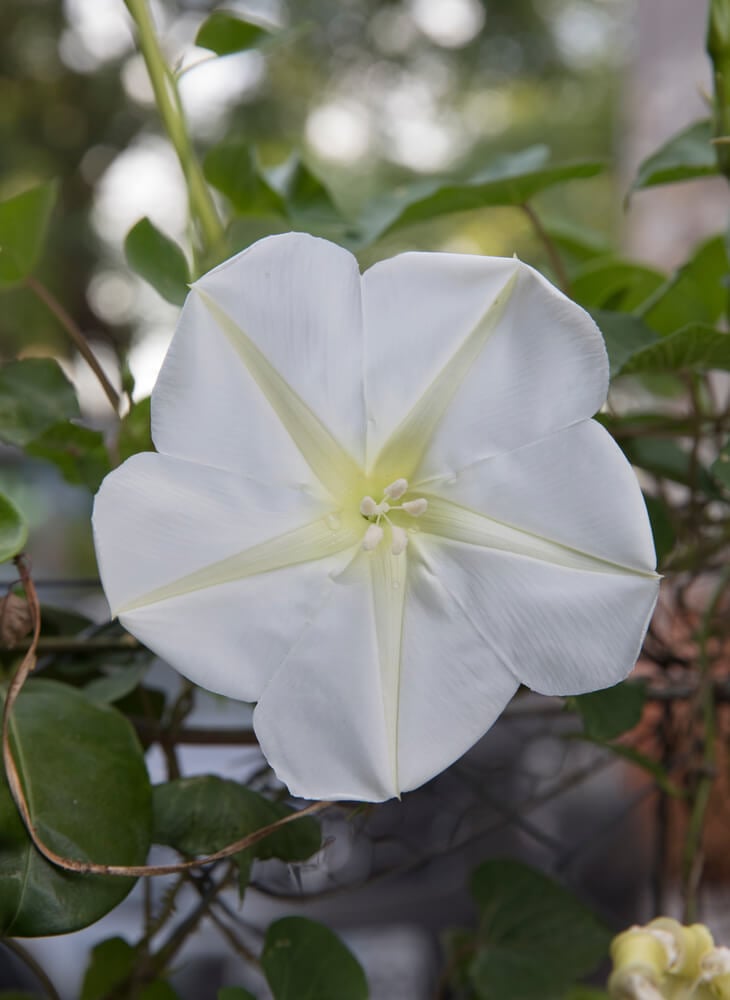
Picture this: massive, dinner-plate-sized white blooms unfurling at dusk like nature’s own spotlights. Then, it releases an intoxicating fragrance that draws moths from across the neighborhood. Moonflowers are the ultimate moth magnet, and where moths gather, bats aren’t far behind.
- USDA Growth Zones: 10 through 12 (grown as an annual elsewhere).
- Appearance: Vigorous climbing vines with heart-shaped leaves and spectacular 4 to 6 inch pure white, trumpet-shaped flowers.
- Attracts: Sphinx moths, hawk moths, and numerous other nocturnal lepidoptera. Hummingbird moths at dusk.
Plant these vigorous vines along a fence or trellis. Then watch your garden transform into a nocturnal feeding station.
2. Evening Primrose (Oenothera biennis)
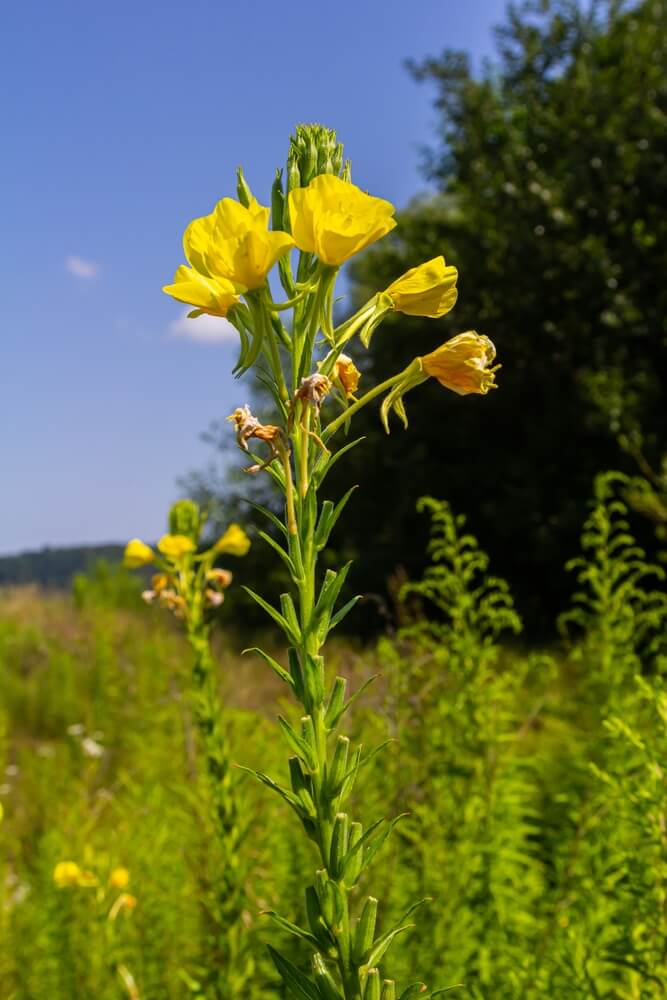
Evening primrose is a gorgeous low-maintenance perennial. It’s also a lovely wildflower that self-seeds freely. Its pale yellow blooms pop just as the sun dips below the horizon. It creates drifts of insect-attracting blooms that provide a reliable hunting ground for bats from June through September.
- USDA Growth Zones: 3 through 9.
- Appearance: Upright stalks reaching 3 to 5 feet with lance-shaped foliage and cheerful 1 to 2 inch pale yellow four-petaled flowers.
- Attracts: Moths (especially sphinx moths), nocturnal beetles, and various night-flying pollinators.
Evening Primrose also thrives in poor soil where other flowers struggle. It’s a perfect bat plant for any challenging garden spots.
Read More – 15 Best Vegetables To Grow In October For An Epic Fall, Winter, Or Spring Harvest!
3. Four O’Clocks (Mirabilis spp.)
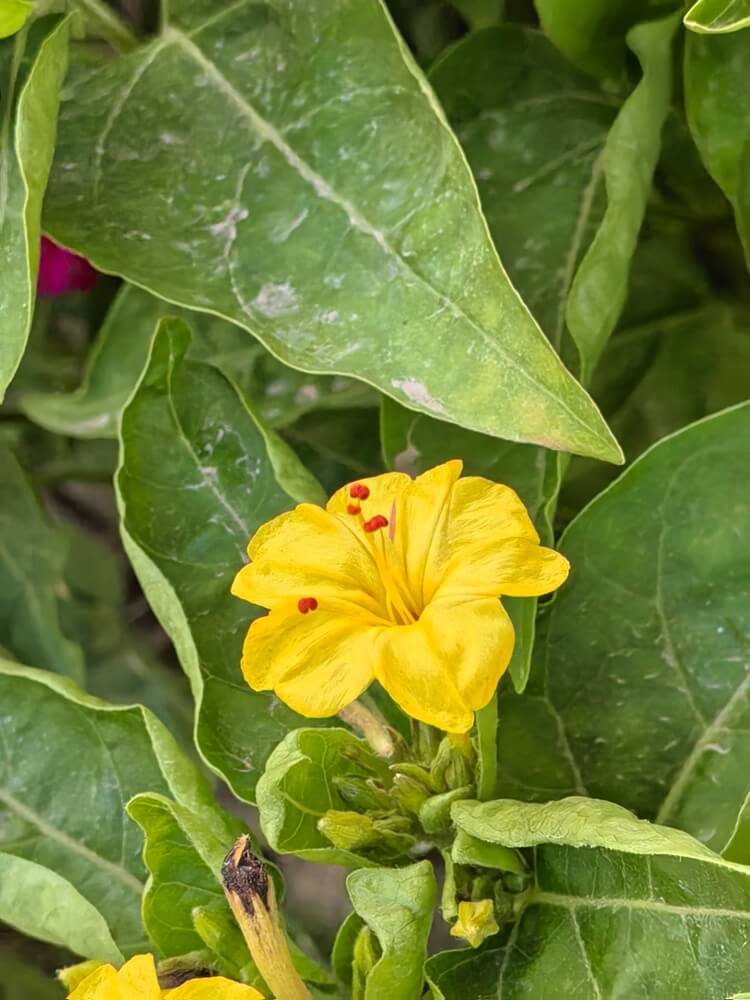
These old-fashioned cottage garden favorites earned their quirky name by opening their trumpet-shaped flowers precisely in the late afternoon (around 4 PM), just in time for the early evening insect rush.
- USDA Growth Zones: 9 through 11 (grown as an annual elsewhere. Tuberous roots can be overwintered indoors in colder zones).
- Appearance: Bushy plants reaching 2 to 3 feet with glossy green foliage and abundant 1-inch trumpet-shaped flowers in vibrant colors.
- Attracts: Sphinx moths, long-tongued bees at dusk, hummingbirds in early evening, and various nocturnal pollinators.
Four O’Clock flowers sport lovely tubular blooms, available in pink, magenta, yellow, and white. They release a sweet, jasmine-like fragrance that draws sphinx moths and other nocturnal insects like clockwork.
4. Saguaro Cactus (Carnegiea gigantea)
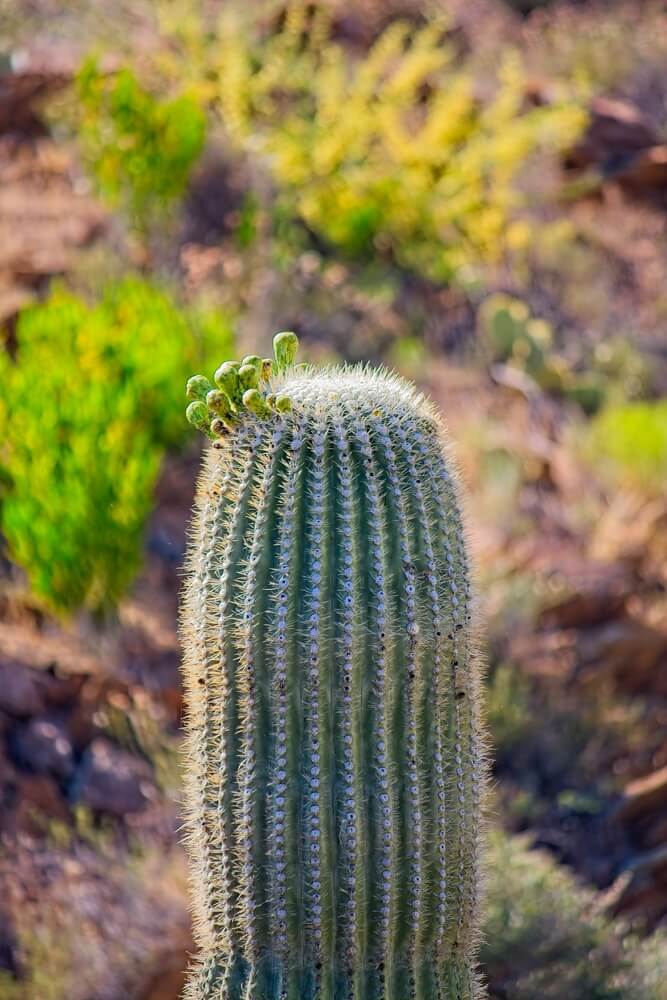
Suppose you’re lucky enough to garden in the desert Southwest. In that case, the iconic saguaro is your golden ticket to attracting lesser long-nosed bats and Mexican long-tongued bats (both federally protected pollinators). These towering cacti produce waxy white flowers that bloom for just one night in late spring, offering up copious amounts of nectar and pollen.
- USDA Growth Zones: 9 through 11 (requires desert conditions; extremely slow-growing).
- Appearance: Iconic columnar cactus reaching 40+ feet at maturity with distinctive arms. 3-inch white waxy flowers with yellow centers.
- Attracts: Lesser long-nosed bats, Mexican long-tongued bats, white-winged doves, and various desert insects.
Witnessing a saguaro bloom being pollinated by bats is one of nature’s most spectacular shows. The resulting fruit feeds wildlife for months afterward.
5. Agave (Agave spp.)
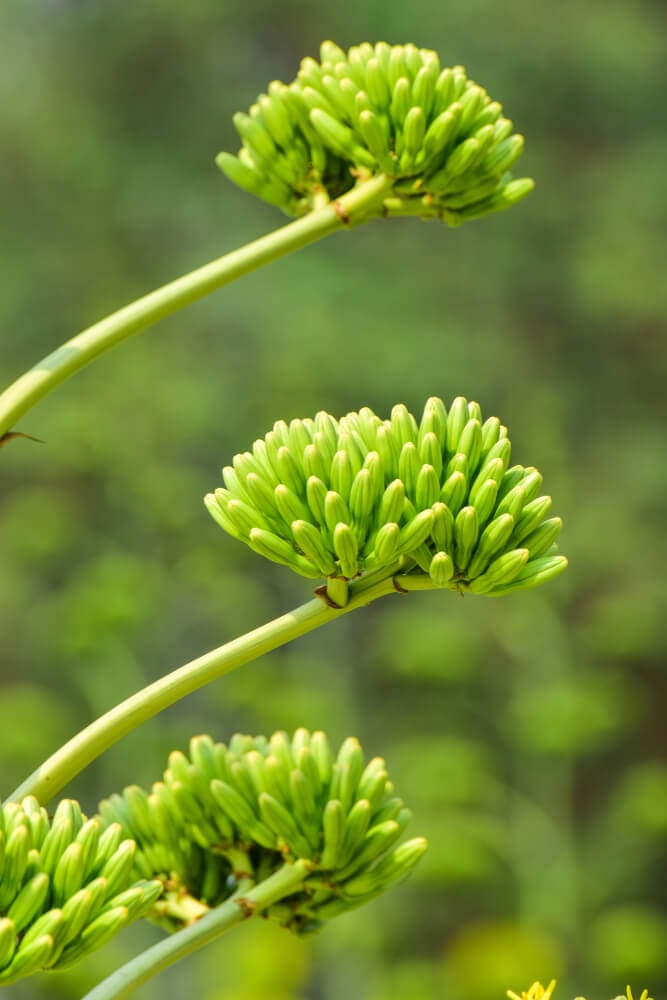
When an agave finally decides to bloom (often after 10 to 30 years!), it goes out spectacularly. The plant sends up a towering flower stalk that can reach 30 feet tall. These dramatic nocturnal blooms are designed explicitly for bat pollination, producing abundant nectar that drips like liquid gold for nectar-feeding bats.
- USDA Growth Zones: 8 through 11 (varies by species; some hardy to zone 5).
- Appearance: Dramatic rosettes of thick, succulent leaves in blue-green, gray, or variegated patterns. Towering flower spikes with tubular yellow-green blooms.
- Attracts: Lesser long-nosed bats, Mexican long-tongued bats, orioles, hummingbirds, and various nectar-feeding insects.
Agaves are a one-time show. (The plant dies after flowering). But they’re worth growing in warm climates as part of a larger bat-friendly landscape.
Read More – How To Grow Blueberry Shrubs At Home From Seeds, Cuttings, Or Seedlings – The Ultimate Guide!
Part II. The Insect & Moth Attractors (Perennials)
These powerhouse perennials are insect magnets! They offer abundant hunting grounds for hungry bats throughout the growing season.
6. Joe Pye Weed (Eutrochium spp.)
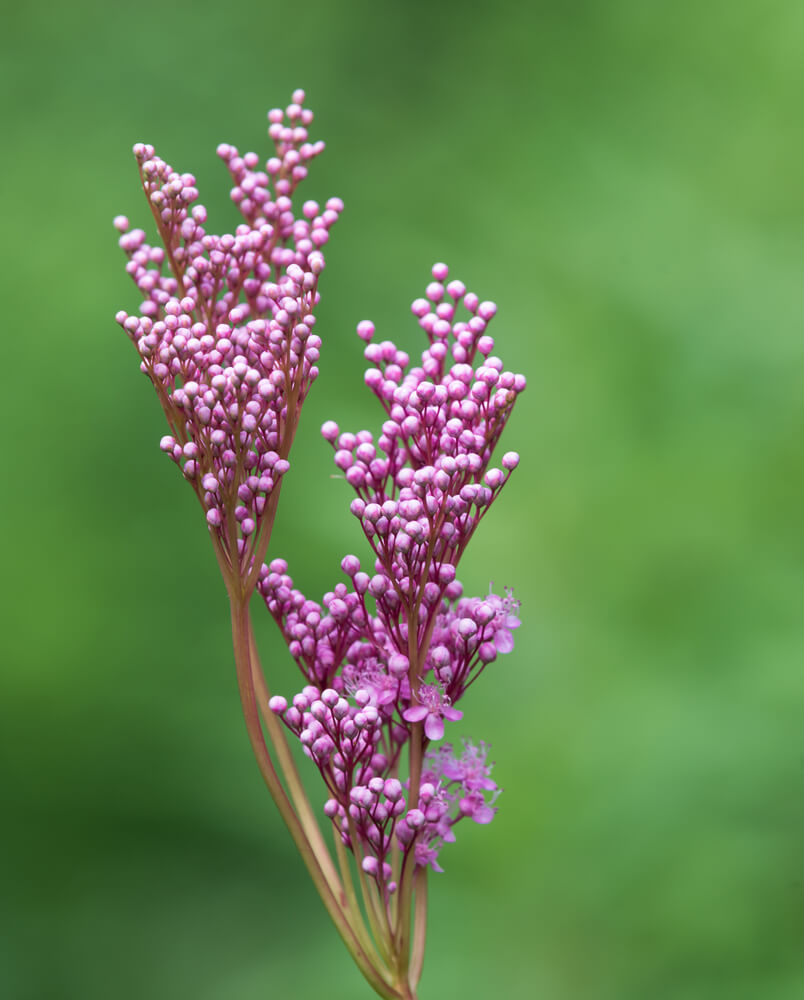
This towering native perennial reaches 4 to 7 feet in height! Its massive, dusty-rose flower clusters bloom in late summer when many other nectar sources are fading. They attract dozens of moth species that lay their eggs on their foliage. The result is a perpetual buffet of caterpillars and adult moths that keep bats well-fed through the crucial late-summer breeding season.
- USDA Growth Zones: 3 through 9.
- Appearance: Tall, statuesque stems with whorled leaves and large dome-shaped clusters of fuzzy dusty-rose to purple flowers.
- Attracts Numerous moth species (including swallowtail moths), butterflies by day, beetles, and countless other pollinators, serving as a larval host plant.
Plant it in a rain garden or in a low-lying area. It loves moisture and will reward you with years of bat-attracting power.
7. Wild Bergamot (Bee Balm) (Monarda fistulosa)
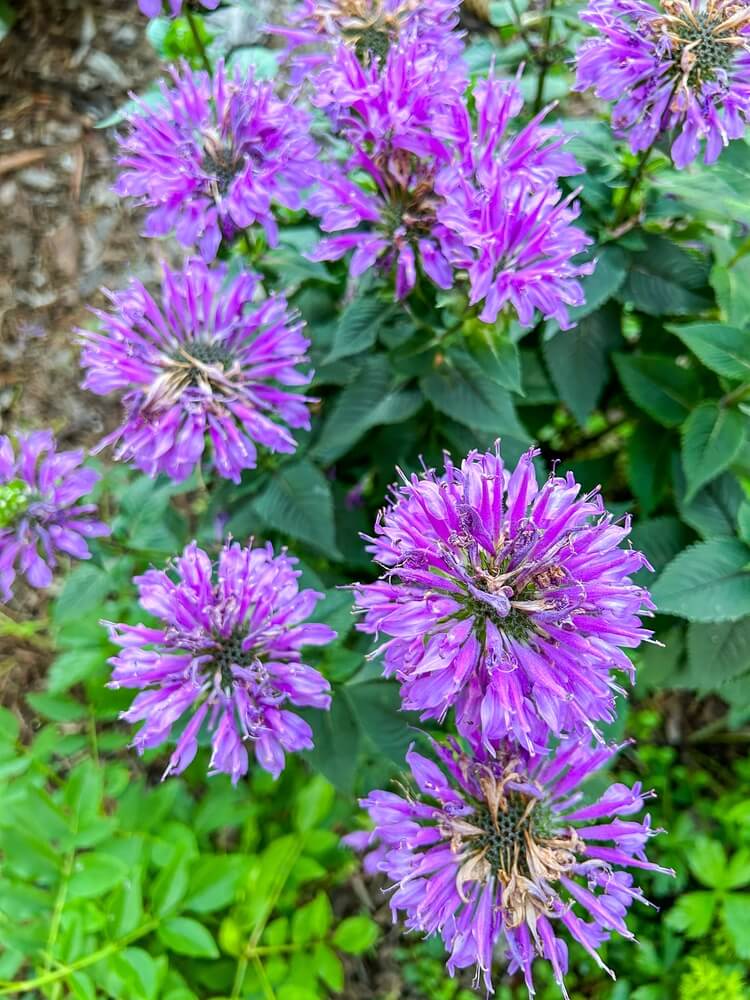
Don’t let the name fool you. While bees adore this fragrant native during the day, it’s the night shift that really matters for bats. Wild bergamot’s aromatic, lavender-pink blooms continue releasing their minty-sweet fragrance into the evening hours, drawing in countless nocturnal moths, beetles, and other flying insects.
- USDA Growth Zones: 3 through 9.
- Appearance: Square stems reaching 2 to 4 feet, topped with shaggy, tubular lavender-pink flowers. Aromatic mint-scented foliage.
- Attracts: Sphinx moths, noctuid moths, nocturnal beetles, bees, and butterflies by day, and hummingbirds.
This rugged prairie native spreads readily, tolerates drought, and provides a reliable insect hunting ground from midsummer through fall.
8. Goldenrod (Solidago spp.)
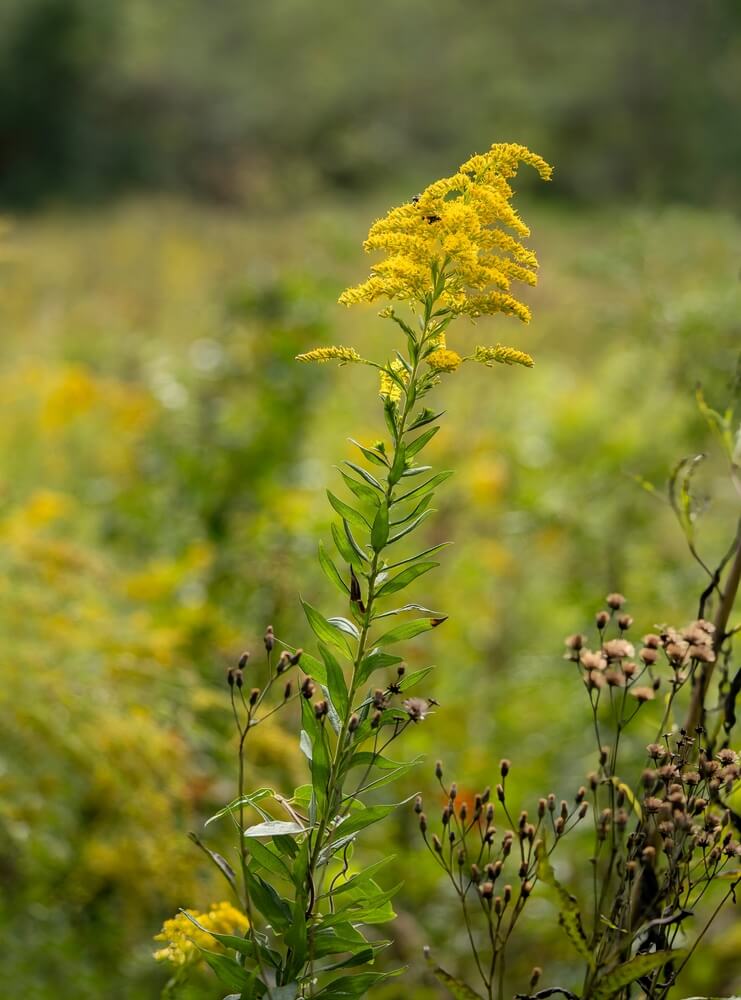
These late-summer bloomers produce dense, golden plumes absolutely teeming with beetles, moths, flies, and other insects. That creates what essentially amounts to a drive-through restaurant for hungry bats.
- USDA Growth Zones: 3 through 9 (varies by species).
- Appearance: Upright stalks 2 to 6 feet tall with narrow green leaves and bright golden-yellow plume-like flower clusters.
- Attracts: soldier beetles, ambush bugs, various moth species, flies, native bees, and over 100 species of insects. Critical for pre-hibernation feeding of bats.
Goldenrod is also remarkably low-maintenance and drought-tolerant.
9. Whorled Milkweed (Asclepias verticillata)
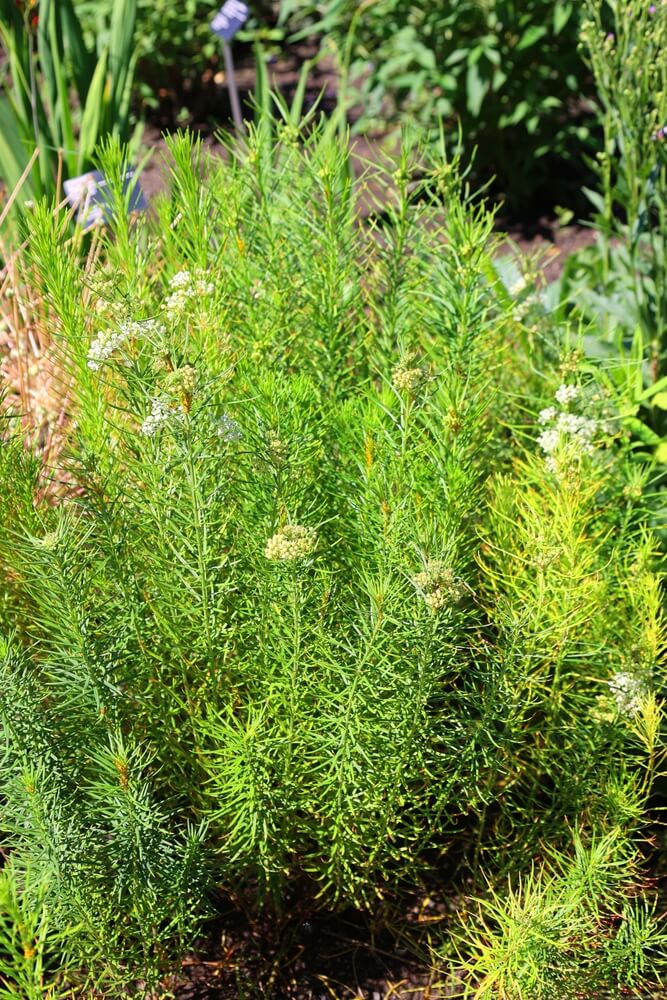
This delicate-looking native milkweed packs a serious punch when it comes to attracting nighttime insects. Its clusters of small, white, honey-scented flowers are particularly irresistible to moths, which visit throughout the evening hours.
- USDA Growth Zones: 3 through 9.
- Appearance: Fine, needle-like whorled foliage on 1 to 2-foot stems topped with dainty clusters of small white fragrant flowers.
- Attracts: Various moth species, monarch butterflies, and native bees, and serves as an essential larval host plant for monarch caterpillars.
Unlike its showier cousins, whorled milkweed has delicate, needle-like foliage that gives it an airy, graceful appearance. It’s perfect for weaving through perennial borders.
Read More – How To Grow Gorgeous Japanese Maple Trees From Seed In Your Home Garden – The Ultimate Guide!
10. Penstemon (Beard Tongue, Penstemon spp.)
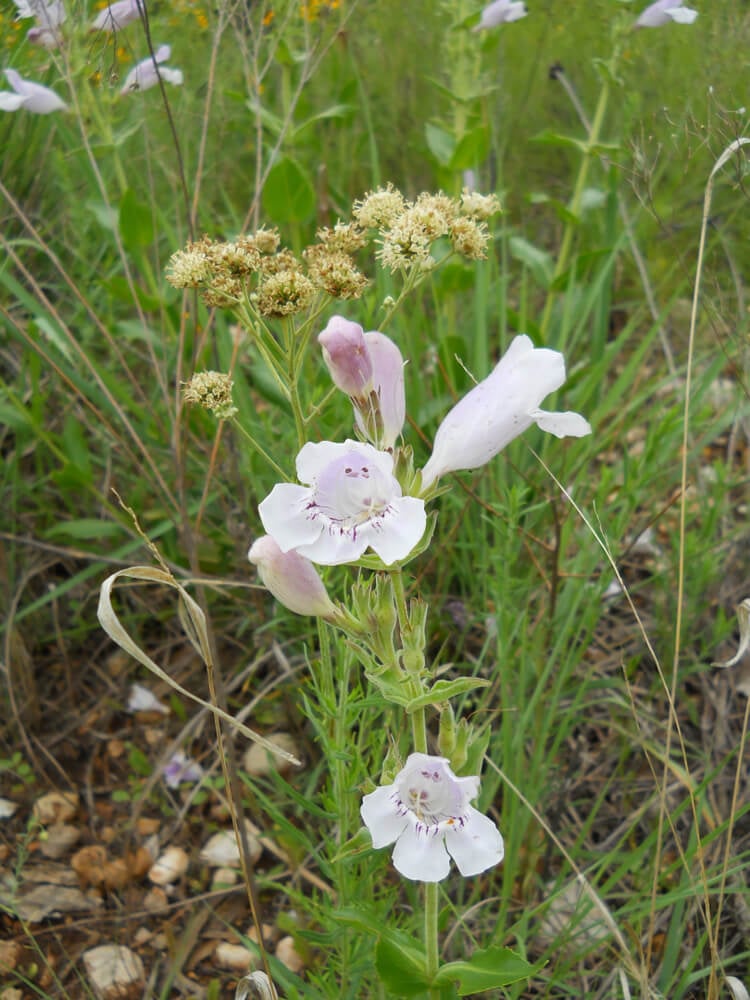
With over 250 native species to choose from, there’s a penstemon for virtually every garden situation. Bats thank you for planting any of them. These tubular flowers attract a diverse array of nocturnal pollinators and their predators, creating a complex food web that supports healthy bat populations.
- USDA Growth Zones: 3 through 9 (varies widely by species).
- Appearance: Upright stems 1 to 4 feet tall with lance-shaped leaves and showy tubular flowers in purple, pink, red, white, or blue.
- Attracts: Sphinx moths, various nocturnal insects, hummingbirds, and native bees. It also serves as a host for several butterfly species.
Choose native species suited to your region (like Rocky Mountain penstemon in the West or foxglove beardtongue in the East).
Part III. The Bat-Friendly Shrubs & Woody Plants
The following plants offer superb structural support for roosting bats.
11. Elderberry (Sambucus spp.)
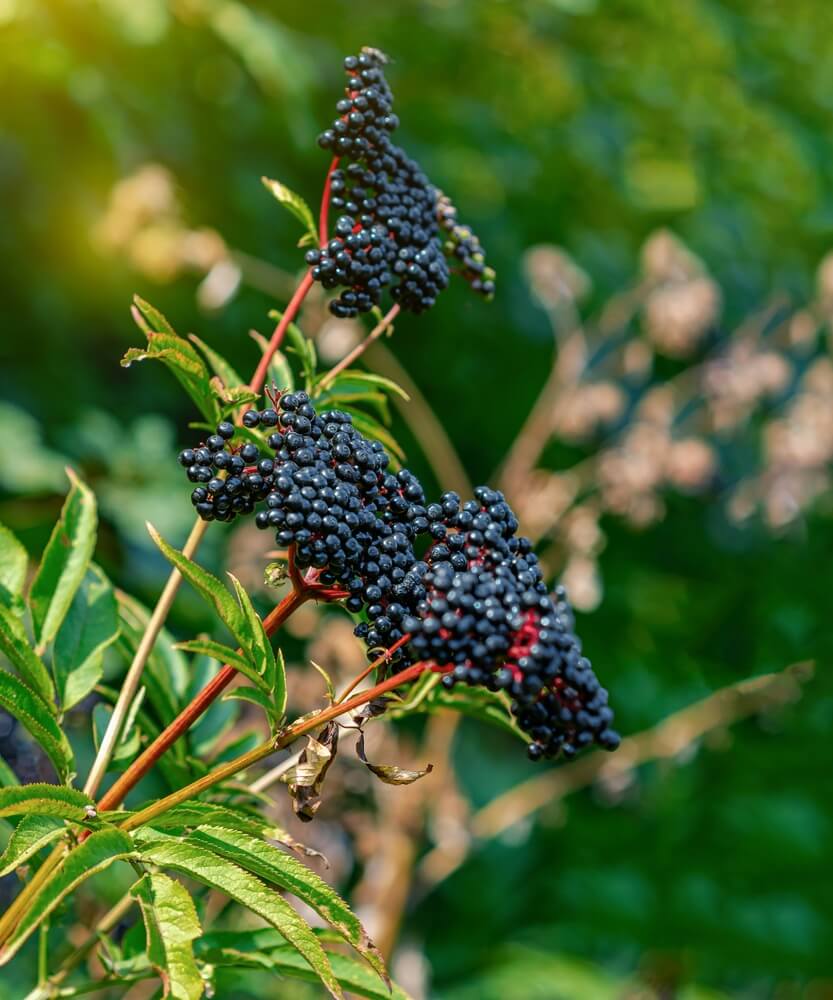
This fast-growing, multi-purpose native shrub is a triple threat for bat enthusiasts. Its flat-topped clusters of creamy white flowers attract countless nocturnal insects. And its dark berries feed birds and wildlife (you can even make delicious jam!). Elderberries create dense thickets that provide excellent daytime roosting cover for bats while simultaneously generating an endless supply of moths and beetles for them to feast on at night.
- USDA Growth Zones: 3 through 9 (varies by species).
- Appearance: Multi-stemmed shrub 6 to 12 feet tall with compound leaves and large flat-topped clusters of tiny creamy-white fragrant flowers, followed by dark purple-black berries.
- Attracts: Moths (including cecropia and polyphemus), beetles, flies, and various lepidoptera. Serves as a larval host plant for multiple moth species.
Plant it in moist soil and stand back. It grows with abandon.
12. Buttonbush (Cephalanthus occidentalis)
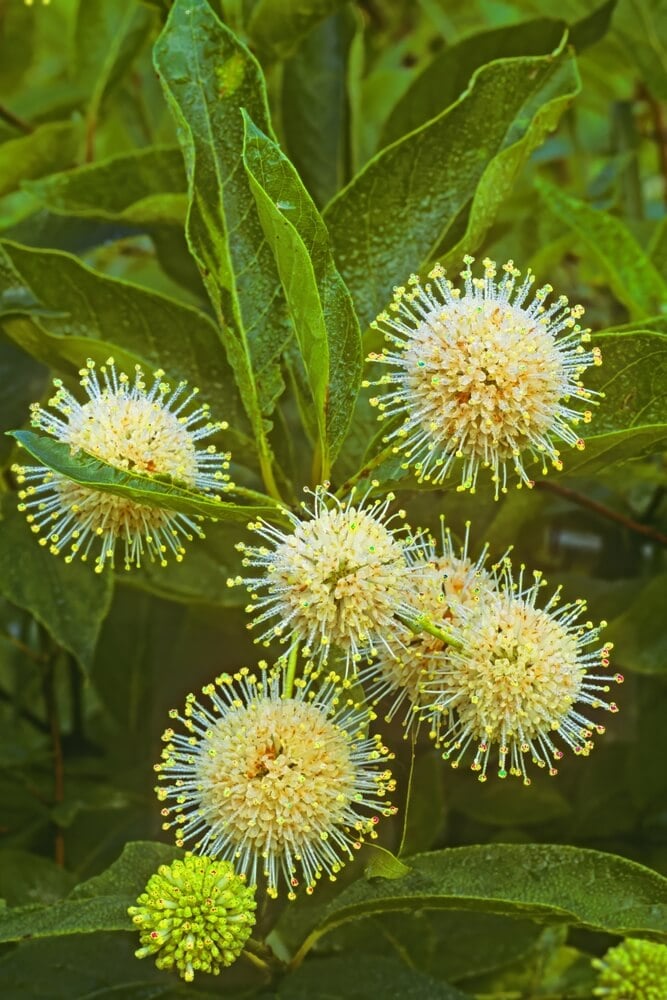
This gorgeous shrub produces unique, golf-ball-sized white flower clusters that emit a sweet, honey-like fragrance, especially potent in the evening hours. The flowers are absolute insect magnets, drawing in moths, beetles, and flies that congregate around the blooms. That makes hunting ridiculously easy for foraging bats.
- USDA Growth Zones: 5 through 11.
- Appearance: Rounded shrub 6 to 12 feet tall with glossy green leaves and distinctive spherical 1-inch white pincushion-like flowers with protruding stamens.
- Attracts: Numerous moth species, nocturnal beetles, flies, butterflies by day, and waterfowl (which eat the seeds).
Buttonbush thrives in standing water where few other shrubs survive. It’s perfect for rain gardens, pond edges, or those perpetually soggy areas you don’t know what to do with.
Read More – How To Grow Epic Fig Trees From Seeds Or Cuttings – The Ultimate Guide!
13. Banana (Musa spp.)
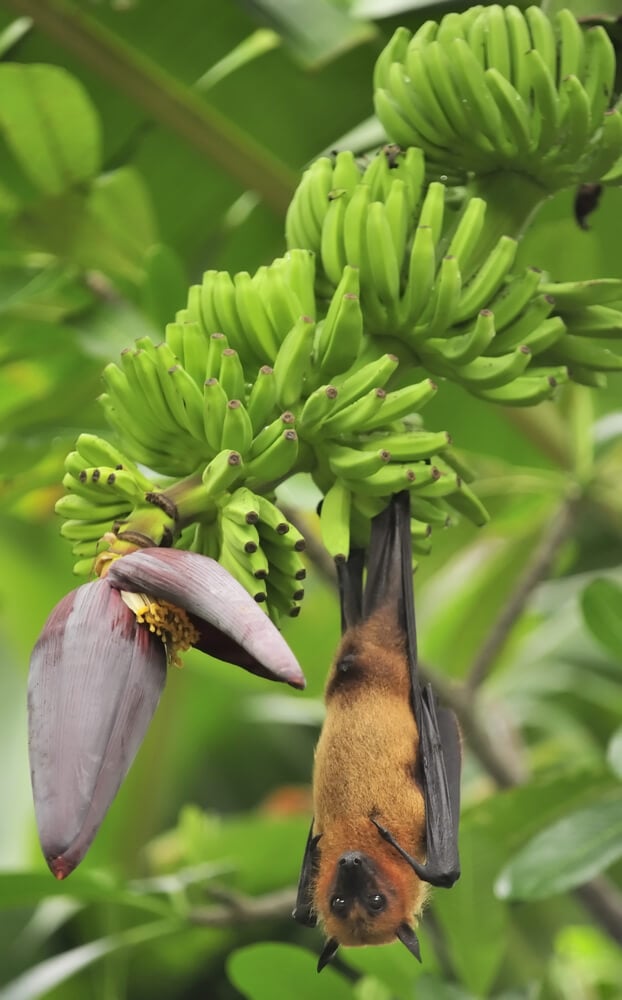
Here’s a fun fact for the globally minded gardener. In tropical regions around the world, wild bananas depend almost entirely on bats for pollination. The plant’s large, cream-colored flowers bloom at night, producing copious nectar that attracts fruit bats by the dozens.
- USDA Growth Zones: 9 through 11 (can be grown in containers in colder zones and overwintered indoors).
- Appearance: Tropical herbaceous “tree” 10 to 20 feet tall with massive paddle-shaped leaves. Large cream-colored tubular flowers emerging from purple bracts.
- Attracts: Fruit bats (in tropical regions), nectar-feeding bats, various tropical moths, and insects.
Most of us can’t grow bananas year-round. (Not unless you’re in zones 9 through 11 or have a heated greenhouse). But understanding this relationship highlights just how critical bats are to global food systems. Without bat pollination, we wouldn’t have this beloved fruit!
Conclusion
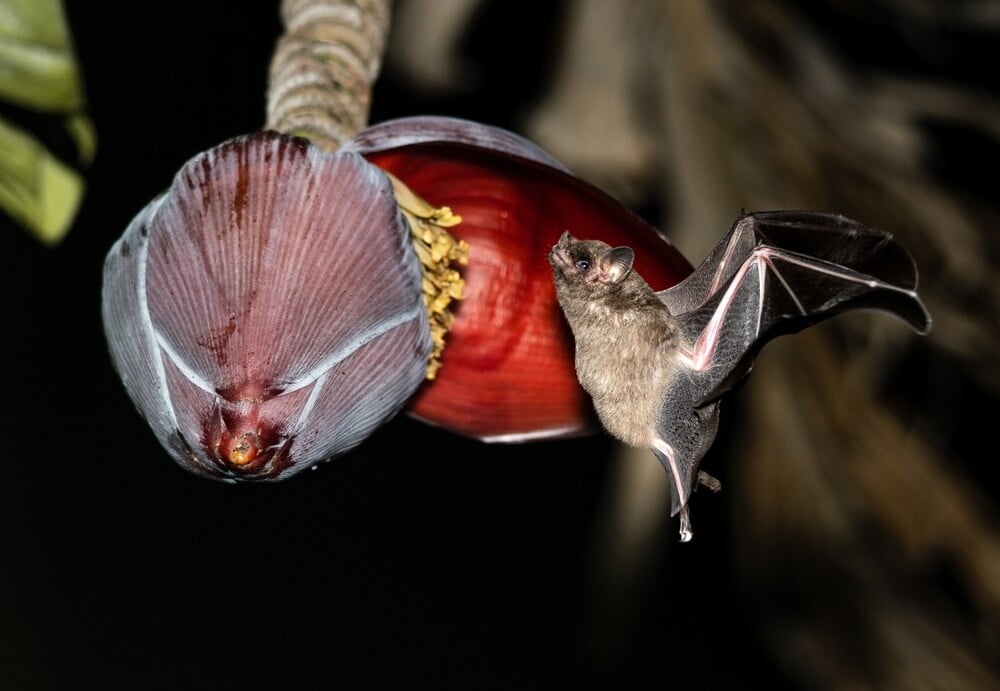
We know most folks despise bats or find them creepy, but homesteaders know the truth: these misunderstood mammals are absolute garden heroes! And if you support them in your neighborhood, you will have far fewer mosquito issues.
What about you?
- Do you have too many mosquitoes in your yard?
- Do you agree that backyard bats are beneficial?
- Will you try growing any of these bat-attracting plants?
Thanks for reading.
Have a great day!

